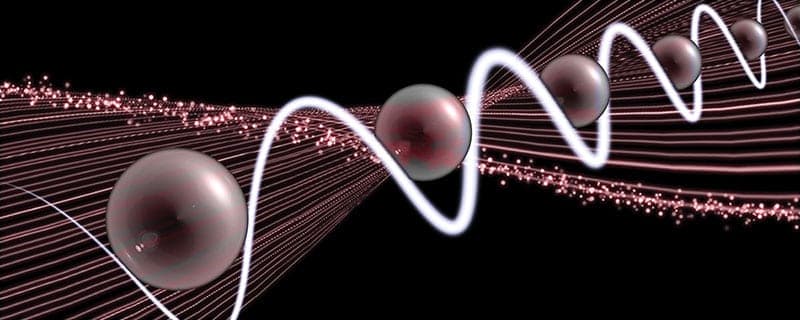Radio uses Rydberg atoms to play ‘Mary had a little lamb’
10 Sep 2018
The sound of a human voice singing “Mary had a little lamb” has been played by a radio receiver that exploits the quantum properties of a cloud of atoms – 140 years after the nursery rhyme was famously recorded by Thomas Edison. In Edison’s case, sound was recorded by using a stylus to rearrange the positions of vast numbers of aluminium atoms on a foil-wrapped cylinder. Now, David Anderson, Rachel Sapiro and Georg Raithel at Rydberg Technologies in Ann Arbor Michigan have used a cloud of highly-excited caesium atoms to store and playback AM and FM radio signals.
The receiver built by Anderson and colleagues uses Rydberg atoms. Such atoms are in highly-excited quantum states in which some electrons spend most of their time relatively far away from the atomic nucleus. As a result, Rydberg atoms can function as tiny antennas that are extremely responsive to electromagnetic fields.The concepts behind their feat promise to address some of the underlying challenges of creating radio communication systems that offer information security and resilience against electromagnetic interference. In principle, quantum radios based on clouds of atoms could be immune to intense interfering fields while transmitting clear signals that cannot be tampered with.
Information storage
Indeed, the resonant frequencies of Rydberg atoms match the radio and microwave frequencies commonly used in communications. The atoms are strongly coupled to these fields, making them ideal for storing information encoded in radio-frequency (RF) and microwave signals. Furthermore, this stored information can be converted back to RF and microwave signals using spectroscopic techniques
In their experiment, the Ann Arbour-based physicists replaced the antenna of a radio receiver with a cloud of caesium Rydberg atoms contained in a centimetre-sized glass cell. Their goal was to demonstrate how the system could receive, record and play-back signals in the audio range.
Spanning four octaves
Their system could receive multi-band AM and FM signals carried by microwaves. The sound frequencies encoded in the signals spanned over four octaves – representing most of the frequency range of the human voice.READ MORE

Operating the system involved making real-time, quantum-optical measurements of how the Rydberg atoms respond to the AM and FM signals. This meant that there was no need for any electronics to demodulate the signals. With virtually no circuitry required, the team’s setup was remarkably compact, which they say makes it highly resistant to interfering electromagnetic fields.
While the dynamic range of the receiver falls slightly short of the standards of modern devices, the trio plan to address in this shortcoming in future experiments.
14/9/2018 FROM PHYSICSWORLD.COM
 Atomic audio: Rydberg atoms have electrons in highly-excited states, which makes them sensitive to RF and microwave signals. (Courtesy: iStock/jdillontoole)
Atomic audio: Rydberg atoms have electrons in highly-excited states, which makes them sensitive to RF and microwave signals. (Courtesy: iStock/jdillontoole)
Δεν υπάρχουν σχόλια:
Δημοσίευση σχολίου